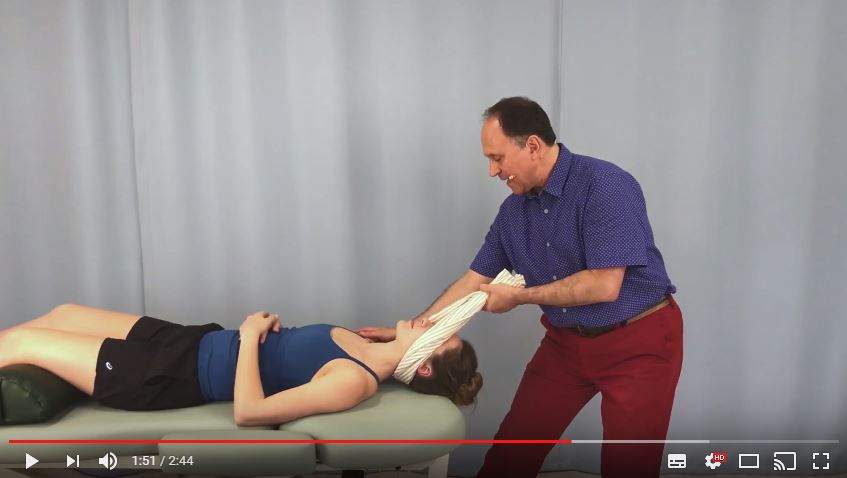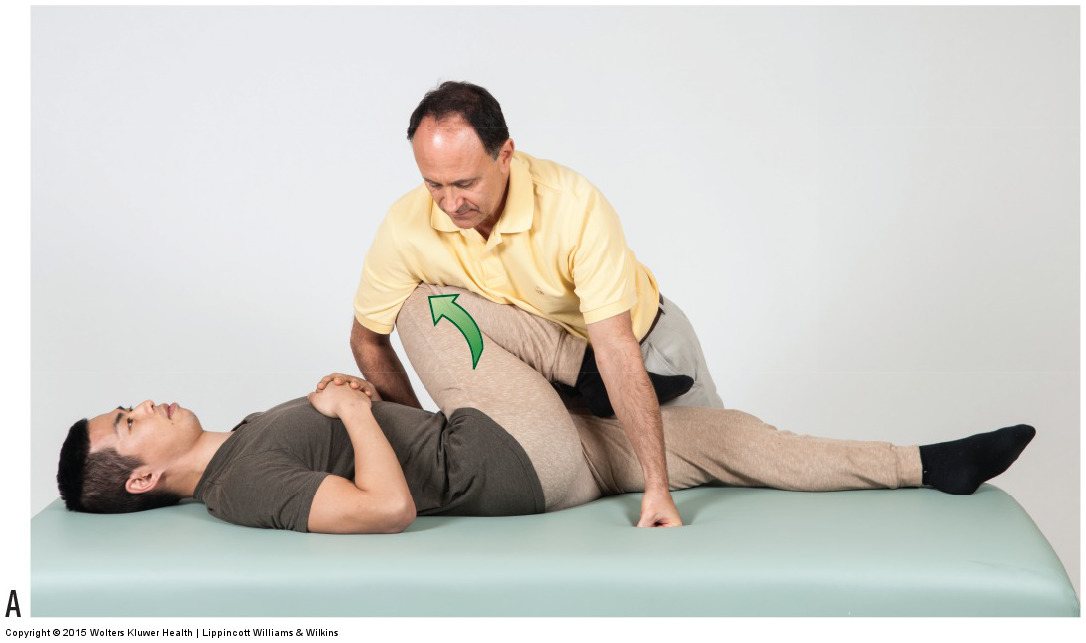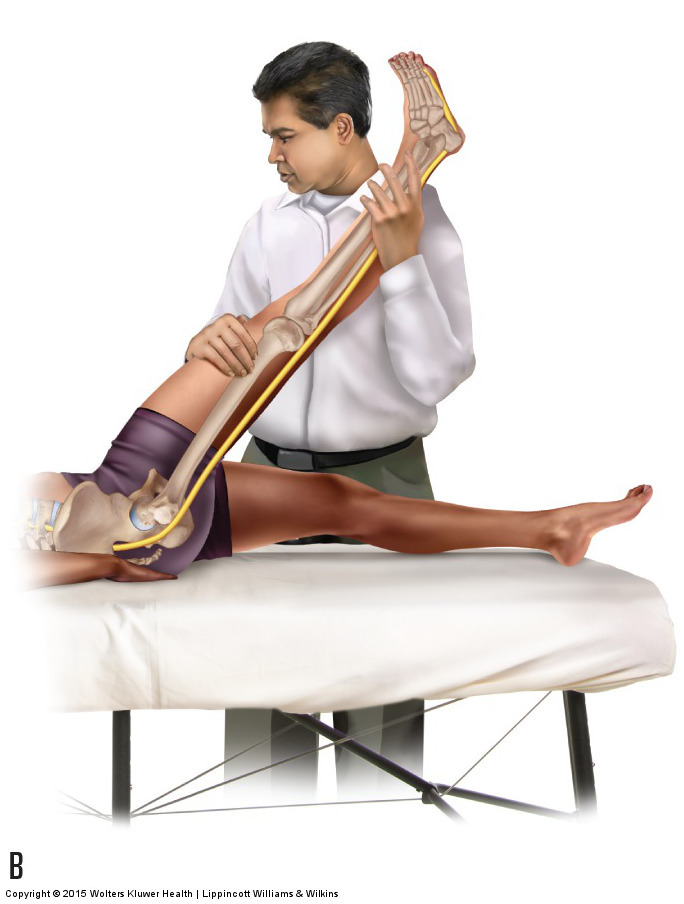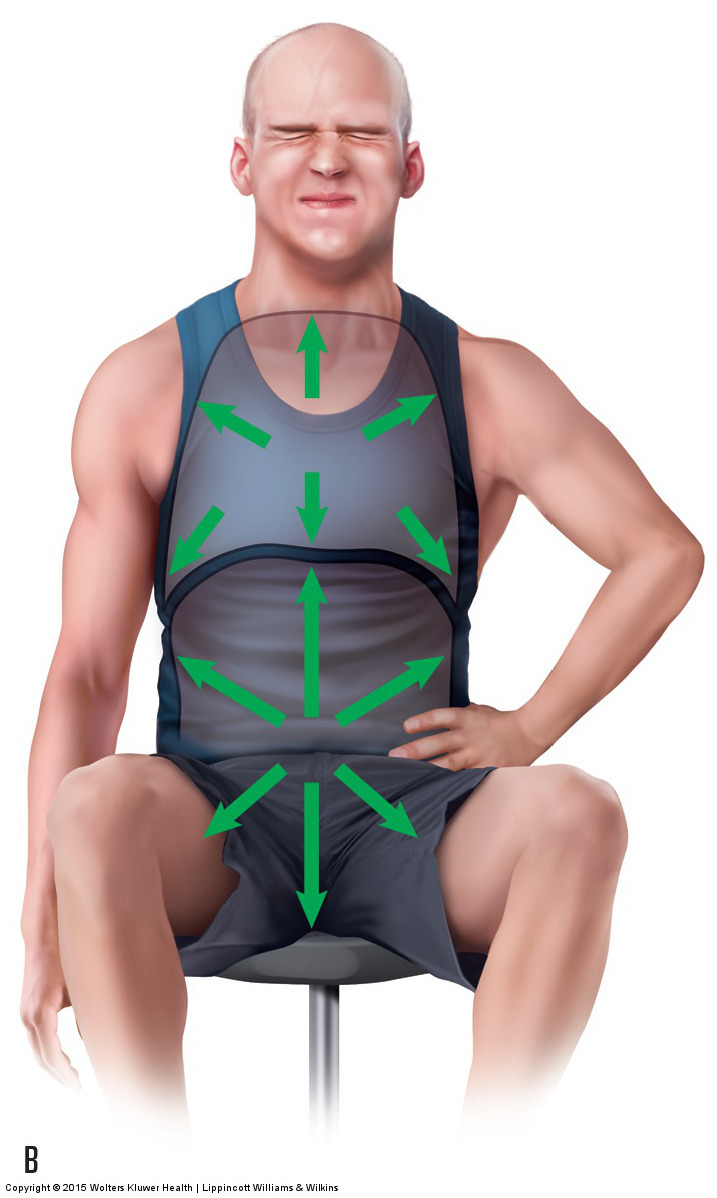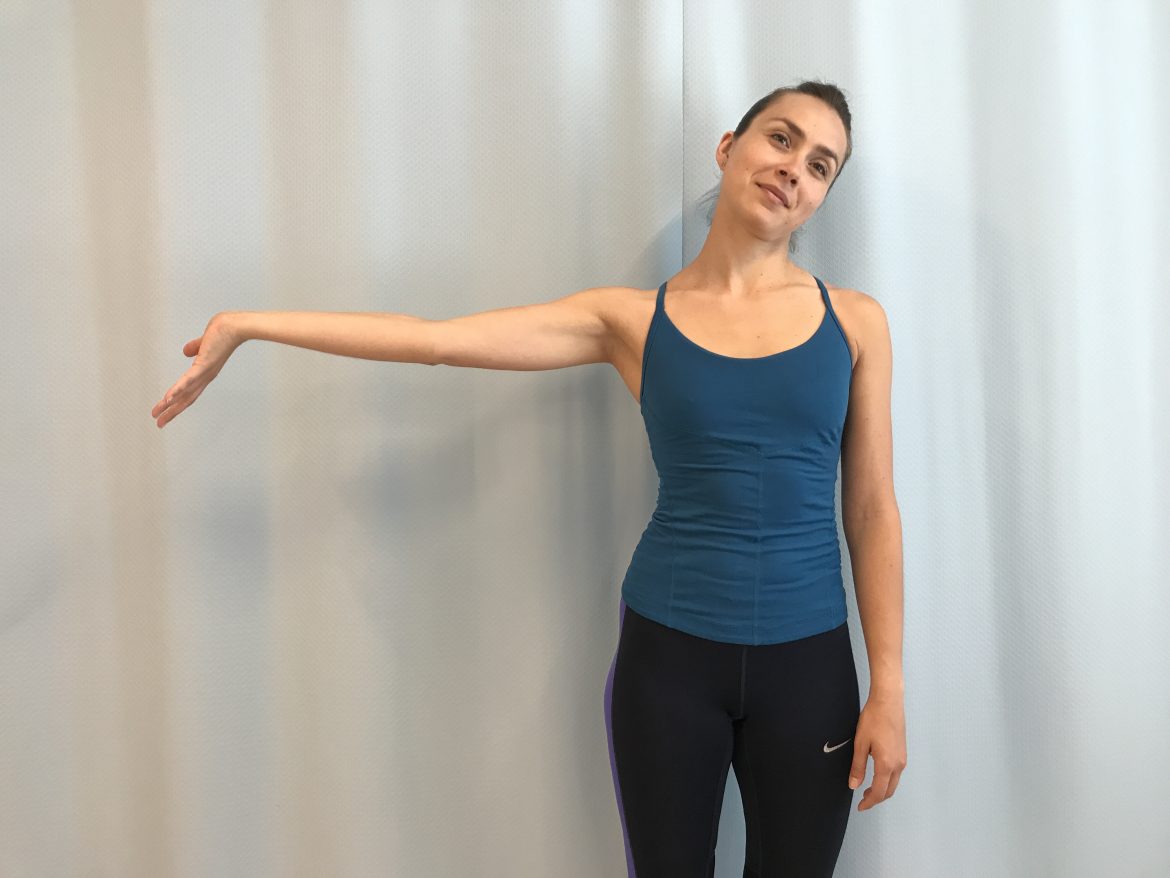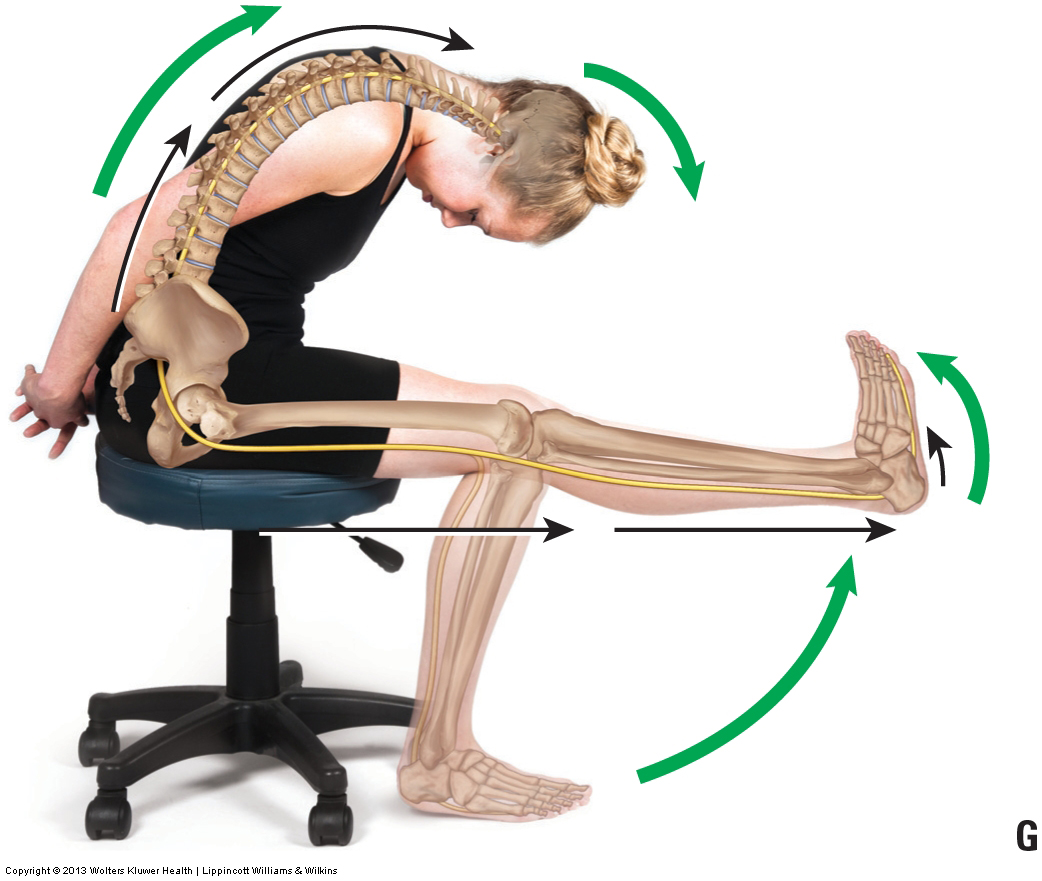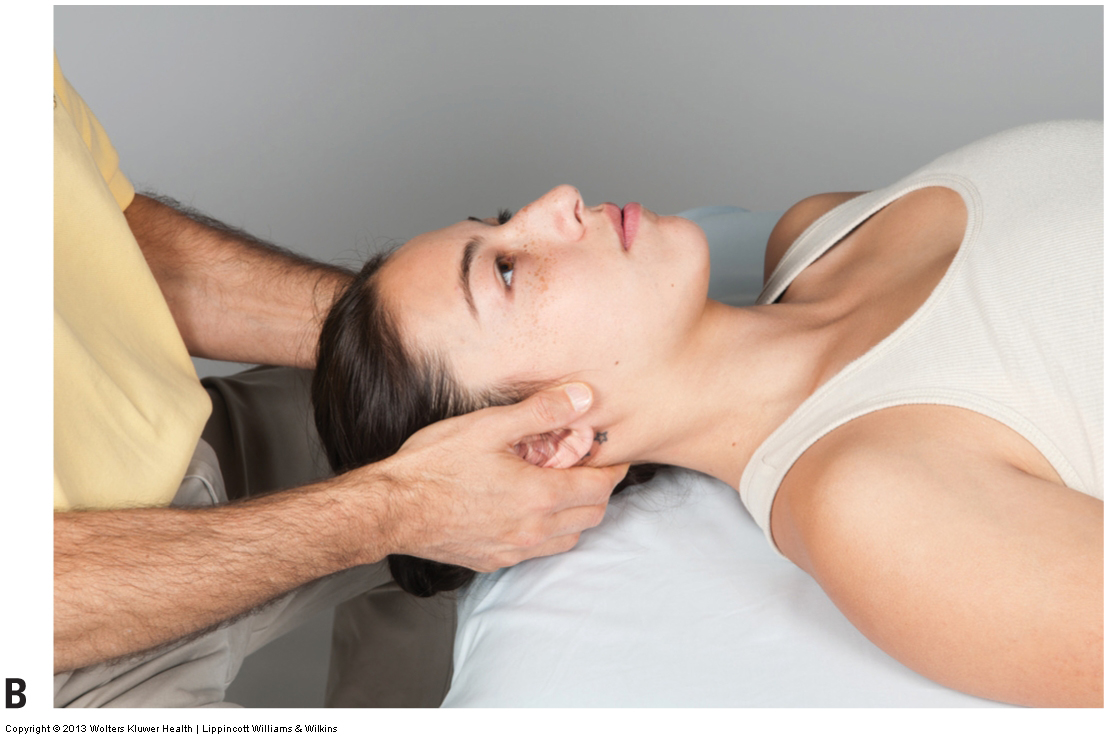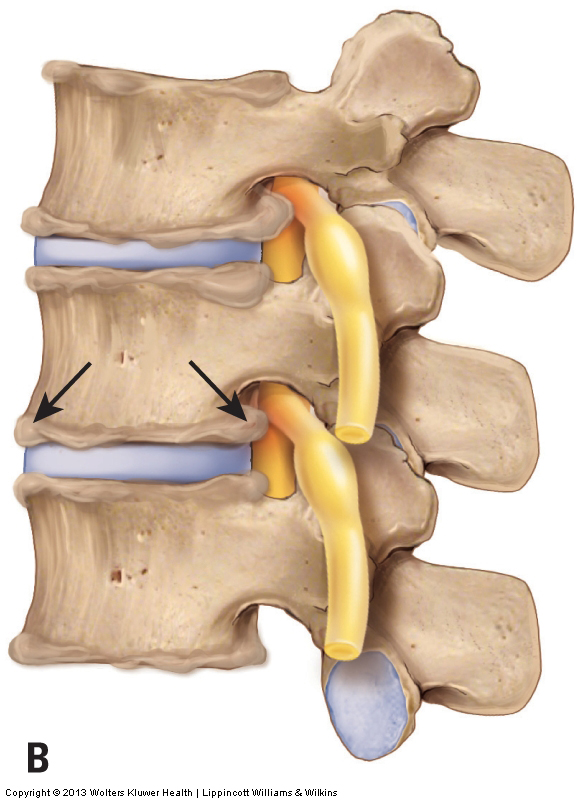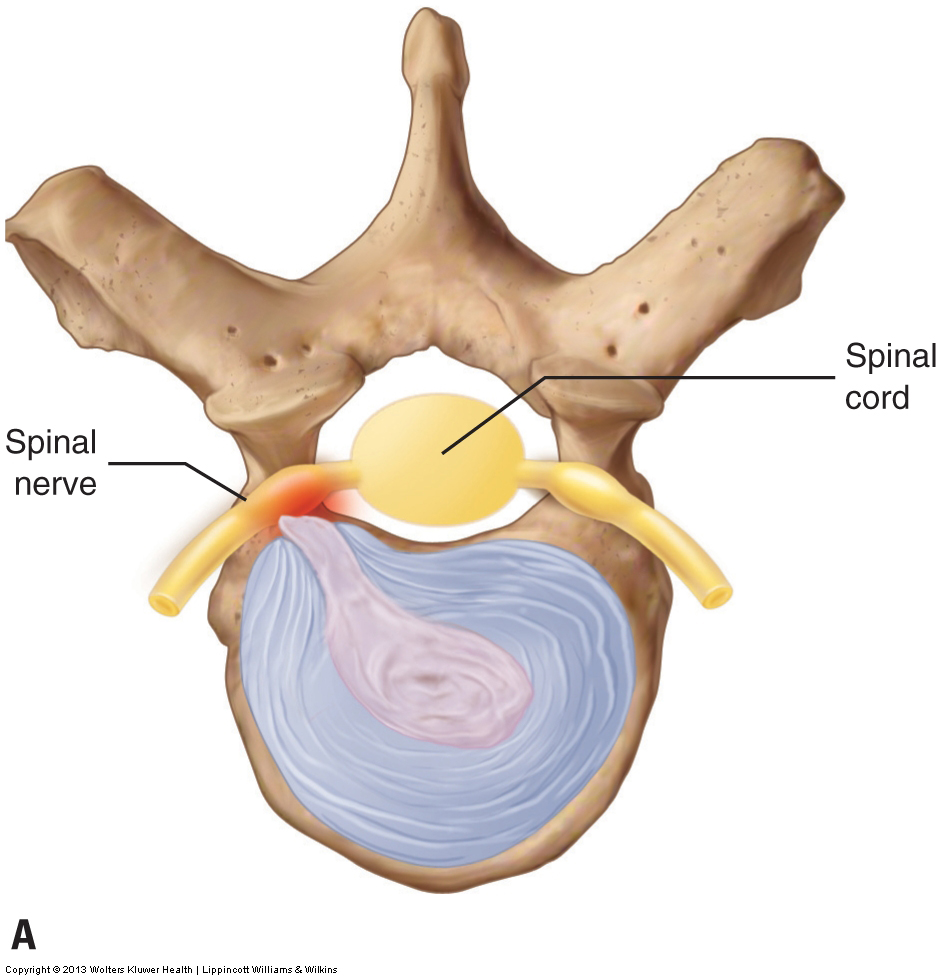Traction for the cervical spine is indicated for the client with a pinched nerve in the neck because it opens up the intervertebral foramina to decompress the spinal nerves. Dr. Joe Muscolino demonstrates how to easily perform neck traction using a towel.
Piriformis Stretch Orthopedic Assessment Test for Piriformis Syndrome
The piriformis stretch test is used to assess piriformis syndrome, that is, compression of the sciatic nerve by the piriformis.
Straight Leg Raise Tests for a Space-Occupying Lesion
Both active straight leg raise and passive straight leg raise tests are designed to tension the sciatic nerve to assess a space-occupying lesion.
Cough Test and Valsalva Maneuver Orthopedic Assessment Tests
Cough test and Valsalva maneuver are designed to increase intrathecal pressure, or pressure on the spinal nerves in the intervertebral foraminal spaces.
Orthopedic Assessment of Thoracic Outlet Syndrome – Brachial Plexus Tension Test
The brachial plexus tension test (BPTT) is actually a series of three tests, each one designed to assess one of the three major nerves that enter the hand.
Orthopedic Assessment of Thoracic Outlet Syndrome – Adson’s, Eden’s, Wright’s
Thoracic Outlet Syndrome (TOS) is a very common set of posture dysfunctional patterns. Adson’s, Eden’s, & Wright’s tests are designed to assess TOS.
Special Orthopedic Assessment Tests – Space Occupying Conditions – Slump Test
The slump test places tension on the spinal cord and PNS. It assesses a space occupying condition of the cervical and lumbar spine, as well as TOS.
Special Orthopedic Assessment Tests for the Neck – Space Occupying Conditions
The term “space occupying condition” is used to describe a condition in which there is compression on a spinal nerve in the intervertebral foramen.
Osteoarthritis of the Cervical Spine
The causative mechanism of osteoarthritis is excessive physical stress placed on the joint, resulting in cartilage and then bony degeneration.
Pathologic Disc Conditions of the Neck
The danger with a disc bulge or herniation is that the disc can compress the spinal nerve within the intervertebral foramen, causing a pinched nerve.

